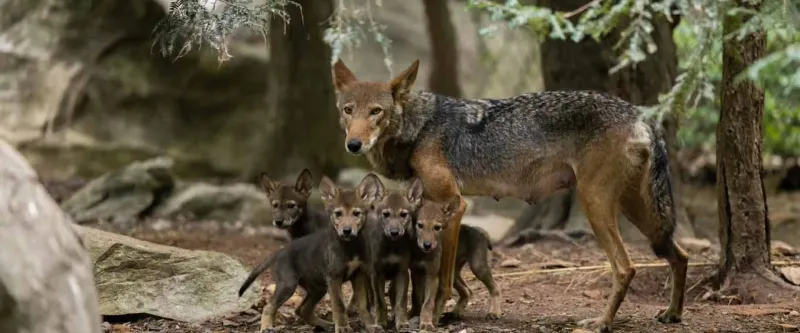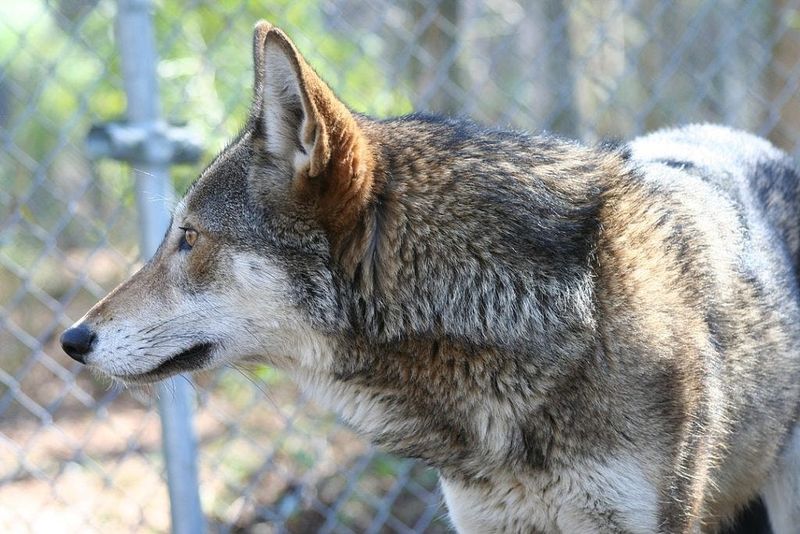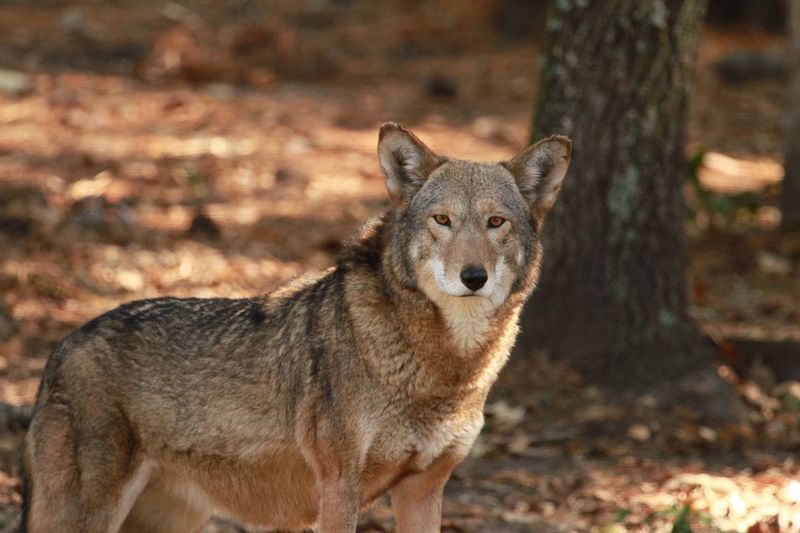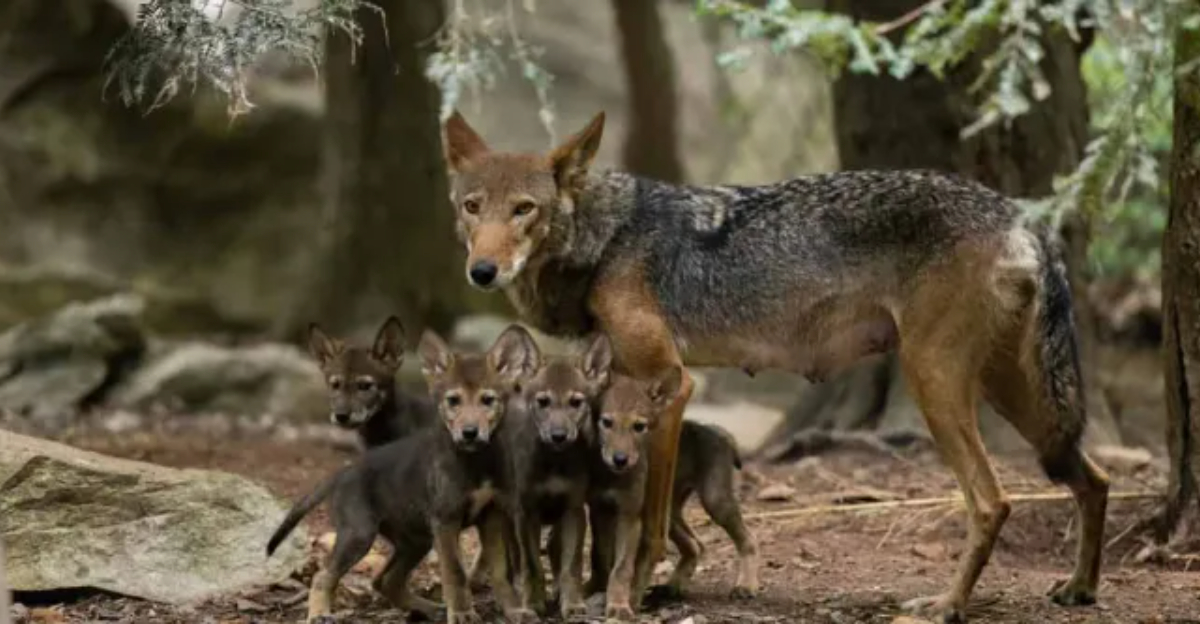The red wolf, once a common sight across the eastern United States, now holds on to survival in just one remote sanctuary in North Carolina.
These striking, rust-colored predators came dangerously close to extinction in the 1970s, driven to the brink by habitat loss and relentless hunting. Today, their comeback is one of the most remarkable conservation stories in America.
But despite these efforts, their future is still uncertain, with fewer than 20 red wolves remaining in the wild.
1. Last Stand In Historic Territory

Red wolves once prowled across a massive territory from Texas to Pennsylvania and down to Florida. These sleek predators, smaller than their gray wolf cousins but larger than coyotes, thrived in diverse habitats from forests to coastal prairies.
European settlement gradually pushed them toward extinction. As forests fell to farmland and wolves were hunted relentlessly, their numbers crashed. By the 1970s, these beautiful creatures had vanished from nearly their entire historic range.
North Carolina’s Albemarle Peninsula contains fragments of their ancestral homeland, making it the logical choice for their reintroduction. The region’s mix of pocosin wetlands, pine forests and agricultural lands mirrors environments where red wolves historically flourished.
2. Rescued From Extinction’s Edge

By 1980, red wolves had essentially disappeared from American wilderness. Only 14 genetically pure individuals remained, all in captivity. The U.S. Fish and Wildlife Service made a bold decision – they would attempt something never done before: bring back an extinct-in-the-wild species.
Biologists bred the last few surviving wolves in captivity, starting a recovery effort that would later set the standard for saving endangered species Their breeding facilities expanded across the country, building a population strong enough for wilderness release.
In 1987, four pairs of wolves were released into northeastern North Carolina’s Alligator River National Wildlife Refuge. This desperate gamble represented the last hope for a species that had nearly vanished forever.
3. Perfect Habitat For Recovery

North Carolina’s Albemarle Peninsula offers red wolves exactly what they need to survive. The 152,000-acre refuge combines dense pocosin wetlands, pine forests, and agricultural edges – creating ideal hunting grounds for these adaptable predators.
The peninsula’s unique geography provides natural boundaries that help keep wolves contained. Water surrounds three sides, while development limits movement to the west. This isolation reduces conflicts with humans and helps prevent genetic mixing with coyotes.
Few people live in this remote wilderness area. Limited human presence means fewer roads, less development, and reduced chances of wolf-human conflicts – critical factors for a controversial predator’s survival. The refuge’s protected status ensures long-term habitat security that few other locations could provide.
4. Battling Extinction’s Relentless Threats

Red wolves face an uphill battle for survival in North Carolina, navigating a maze of threats every day. Hybridization with coyotes represents their greatest genetic threat – as wolf numbers dwindle, desperate individuals mate with coyotes, diluting their already fragile gene pool.
Vehicle strikes claim several wolves yearly on the peninsula’s roads. These senseless losses devastate a population where every individual is crucial. Illegal shootings persist despite federal protections, with several wolves shot each year by poachers or landowners who mistake them for coyotes.
Climate change poses an existential threat to their coastal refuge. Rising sea levels could flood critical habitat, while intensifying hurricanes directly impact wolf survival. Recent storms have caused population declines, highlighting their precarious position in this single, vulnerable location.
5. Fighting for a Future

From a peak of about 120 wolves in the early 2000s, today fewer than 20 confirmed red wolves remain wild in North Carolina. This population collapse triggered emergency conservation measures that might represent their last chance.
A captive breeding program keeps around 250 wolves across 43 facilities nationwide, acting as a genetic reserve to help strengthen wild populations. Recent legal victories have led to better protections, slowing down the species’ rapid decline, at least for now.
Innovative efforts give hope for these incredible predators. Public education campaigns are gaining support, and advanced tracking collars are giving valuable insights. Despite the challenges, conservation groups aren’t backing down, knowing North Carolina is the red wolf’s last wild home—and possibly their final shot at survival.
